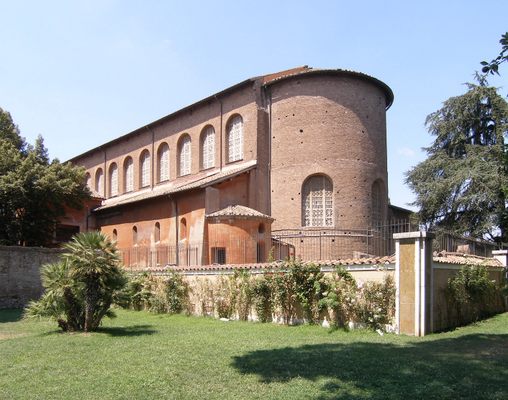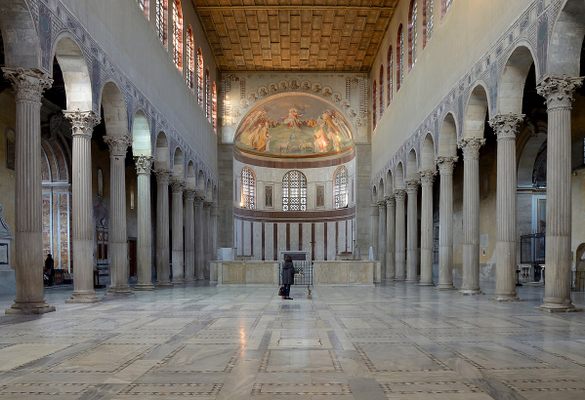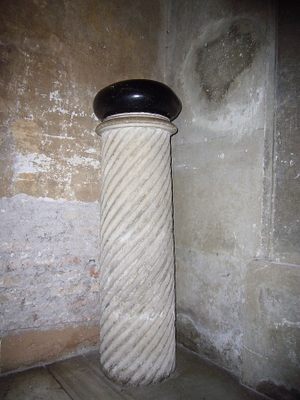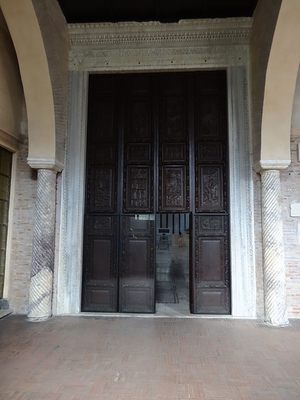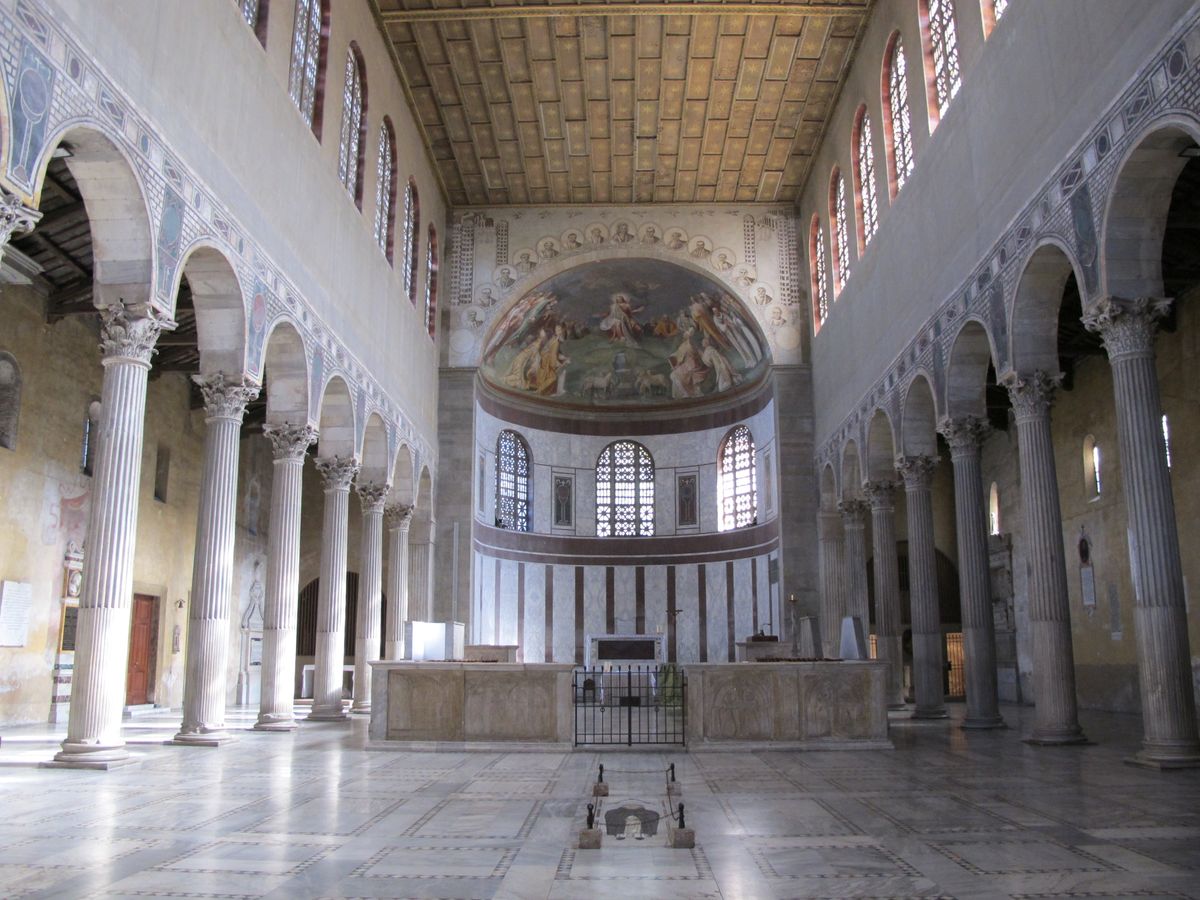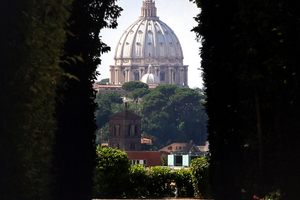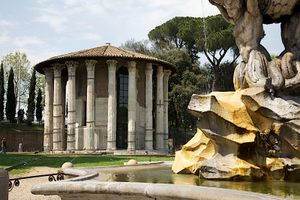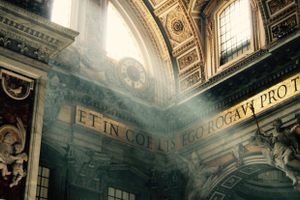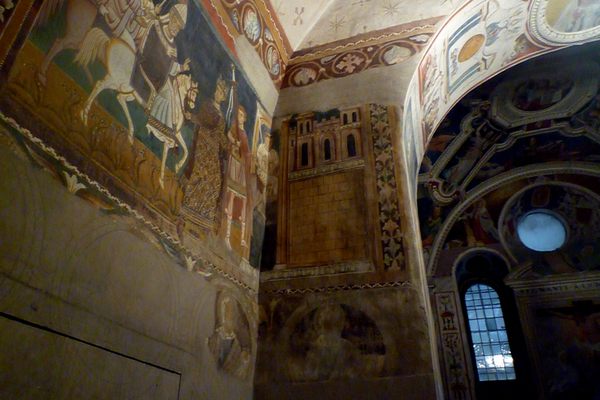About
The Basilica of Santa Sabina on the Aventine Hill in Rome is often described as the best preserved example of Paleochristian architecture in the city of the Popes, providing a visual reference for what other churches and basilicas from its time must have looked like, such as St. Peter's first basilica. But visitors admiring this splendid church may fail to notice a number of oddities and interesting secrets.
The Basilica of Santa Sabina was built by one Peter of Illyria during the reigns of Popes Celestine I (422-432) and Sixtus III (432-440), as testified by the magnificent golden mosaic inscription opposite the apse. This is the only surviving mosaic, as many others would have decorated the space between the arcades and the clerestory.
Upon entering the basilica from the original narthex (and not the present-day side entrance), attentive visitors will spot a magnificent door made of cypress wood dating back to the fifth century, surrounded by a marble door frame. Historians believe this door frame and the 24 Corinthian-style columns that line the interior nave (the third on the left has a mysterious inscription that says "Rufeno"), may have been spolia from a pagan temple to Juno Regina, also located on the Aventine.
This door, restored in later year, presents a number of scenes from the Old and New Testaments including what is believed to be one of the oldest representations of the Crucifixion. Another interesting feature is the face of the Pharaoh who is seen leading his troops across the Red Sea in his desperate and final attempt to prevent Moses from reaching the Holy Land. There is evidence to believe that when the doors were restored in the early 19th century, the Pharaoh's face was carved to look like that of Napoleon, a hated celebrity at the time!
Across from the magnificent door, a hole in the wall reveals a secret cloister and an orange tree, often associated with the original tree planted by St. Dominic, founder of the Dominican Order, whose headquarters are in Santa Sabina. The nearby park with spectacular views over the city is also called Garden of Orange Trees.
In the corner to the left, there stands a dark, polished stone resting on a column. This was most likely a Roman scale-weight but local legend claims that this dark stone was the lapis diaboli, the Devil's stone, which was hurled at St. Dominic while he was praying in the church.
Another interesting feature is a small, isolated column, set at a lower height in a niche. This unusual feature shows how much lower the floor of the previous structure would have been; this may have belonged to Santa Sabina's original house or, in any case, another earlier Roman structure.
Be sure to look toward the ground, too, as the marble pavement of the basilica is interspersed with tomb-slabs, the most spectacular (and extremely rare) of which is that of a Master General of the Dominican Order from the late 13th century to the beginning of the 14th century, which is lavishly decorated with a stylised representation of the man buried therein, in a mosaic style.
Related Tags
Know Before You Go
The Church is usually open from 8:15 a.m. to 12:30 p.m. and from 3:30 p.m. to 6:00 p.m. Recently, the city of Rome has re-opened the magnificent path that leads from Lungotevere Aventino up to Giardino degli Aranci (Orange-trees park). Alternatively, the Basilica can be reached from Piazza Pietro d'Illiria, a short distance from the famous Aventine keyhole.
Flavors of Italy: Roman Carbonara, Florentine Steak & Venetian Cocktails
Savor local cuisine across Rome, Florence & Venice.
Book NowPublished
November 21, 2018

